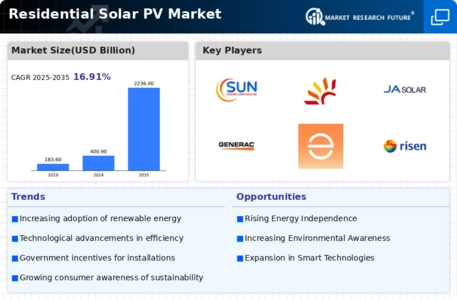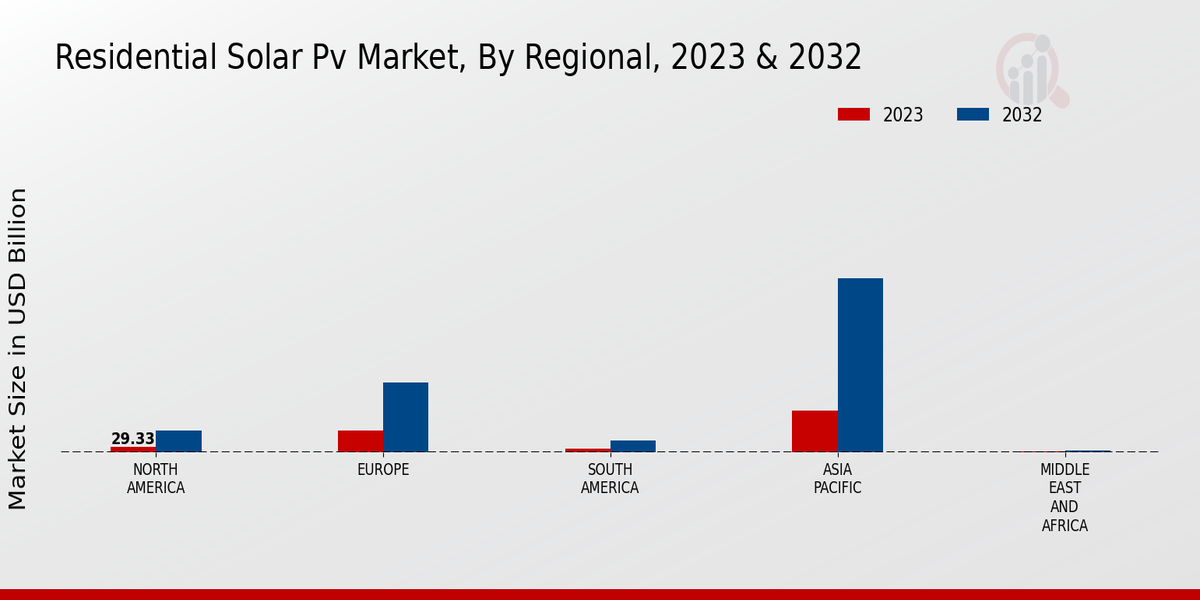Market Growth Projections
The Global Residential Solar PV Market Industry is poised for substantial growth, with projections indicating a market value of 2236.0 USD Billion by 2035. This anticipated growth is underpinned by various factors, including technological advancements, government incentives, and rising electricity prices. The market is expected to experience a compound annual growth rate (CAGR) of 16.91% from 2025 to 2035, reflecting a robust expansion trajectory. Such projections highlight the increasing adoption of solar energy solutions among residential consumers, suggesting a transformative shift in energy consumption patterns globally.
Rising Electricity Prices
The escalating cost of electricity is a key driver influencing the Global Residential Solar PV Market Industry. As utility rates continue to rise, homeowners are increasingly seeking alternative energy sources to mitigate their energy expenses. Solar PV systems provide a viable solution, allowing homeowners to generate their own electricity and reduce reliance on grid power. This trend is particularly evident in regions where electricity prices have surged, prompting a shift towards solar energy adoption. The financial benefits of solar energy, combined with rising electricity costs, are expected to further accelerate market growth in the coming years.
Government Incentives and Subsidies
Government incentives and subsidies play a crucial role in the expansion of the Global Residential Solar PV Market Industry. Many countries offer tax credits, rebates, and grants to encourage homeowners to invest in solar energy systems. These financial incentives significantly lower the upfront costs associated with solar installations, making them more appealing to a broader audience. For example, in the United States, the federal solar tax credit allows homeowners to deduct a percentage of the installation costs from their federal taxes. Such initiatives are likely to sustain the market's growth trajectory, especially as the industry anticipates a CAGR of 16.91% from 2025 to 2035.
Growing Demand for Renewable Energy
The Global Residential Solar PV Market Industry experiences a robust demand for renewable energy sources, driven by increasing awareness of climate change and the need for sustainable energy solutions. Governments worldwide are implementing policies to promote renewable energy adoption, which has led to a significant rise in residential solar installations. In 2024, the market is valued at approximately 400.9 USD Billion, reflecting a growing trend towards clean energy. This shift not only reduces carbon emissions but also enhances energy independence for homeowners, making solar PV systems an attractive investment for residential consumers.
Technological Advancements in Solar PV
Technological innovations in solar photovoltaic systems are propelling the Global Residential Solar PV Market Industry forward. Enhanced efficiency rates, improved energy storage solutions, and the development of smart solar technologies are making solar energy more accessible and cost-effective for homeowners. For instance, the introduction of bifacial solar panels and advanced inverters has increased energy generation capabilities. These advancements contribute to a projected market growth, with estimates suggesting a valuation of 2236.0 USD Billion by 2035. As technology continues to evolve, it is likely that residential solar systems will become even more efficient and user-friendly.
Environmental Awareness and Sustainability
Growing environmental consciousness among consumers is significantly impacting the Global Residential Solar PV Market Industry. As awareness of the detrimental effects of fossil fuels on the environment increases, homeowners are more inclined to adopt sustainable energy solutions. Solar energy is perceived as a clean and renewable alternative that contributes to reducing greenhouse gas emissions. This shift in consumer behavior is fostering a favorable environment for solar PV adoption. As more individuals prioritize sustainability in their purchasing decisions, the demand for residential solar systems is likely to rise, further propelling market growth.
























